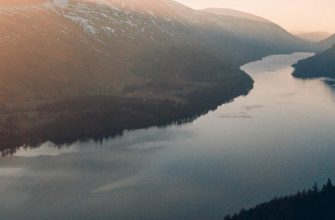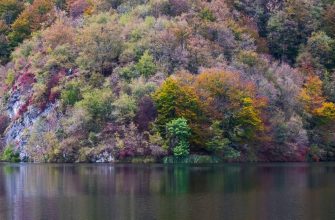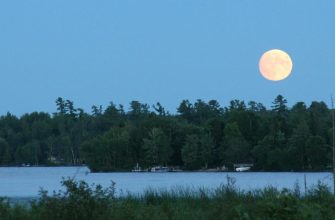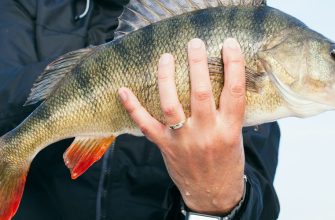- Understanding Kerr Lake in North Carolina and Virginia
- Description
- History
- Location, Size and Depth
- Amenities and Features
- Angler Strategies for Kerr Lake Bass Fishing
- Types of Bass in Buggs Island Lake
- Tips and Techniques for Successful Bass Angling in Buggs Island Lake
- Preferred Attractants and Lures for Bass
- Best Seasons and Time of Day for Bass Fishing in Buggs Island Lake
- Hotspots for Bass Fishing in Kerr Lake
- Satterwhite Point
- County Line
- Kimball Point
- The Surroundings of Roanoke
- Catfish Fishing
- Best Baits and Techniques
- Top Spots
- Catfish Angling Tips and Tricks
- Catching Trophy Catfish
- Striper Fishing
- Hotspots
- Effective Lures and Techniques
- Strategies for Landing Big Striped Bass
- Seasonal Patterns for Striper Angling
- Crappie Fishing
- Where to Find Them
- Best Baits and Rigs
- Tips for Catching Jumbo Crappies
- angling Techniques and Approaches
- Other Fish Species
- Walleye
- White Perch
- Bluegill & Sunfish
- Kerr Lake Water Levels
- How to Adapt to Changing Water Levels at Buggs Island Lake
- Strategies for Fishing High Water Conditions on Buggs Island Lake
- Tips for Navigating Low Water Levels on Buggs Island Lake
- Kerr Lake Fishing Regulations and Licensing
- angling Seasons and Limits
- Catch and Release Practices
- angling Licenses for Kerr Lake
- North Carolina Angling License
- Virginia angling License
- Marinas and Campgrounds
- Boat Ramps and Dock Features
- Picnic Areas and Amenities
- Top Campgrounds for Anglers
- Camping Facilities and Accommodations
- Camping Tips and Recommendations for Buggs Island Lake Visitors
- Planning Your Trip
- Directions to Kerr Reservoir
- Suggestions for Planning a Successful Angling Trip to Lake
- Bank & Boat Access – Virginia
- Bank & Boat Access – North Carolina
- Recommendations for Accommodations, Boat Rentals and Local Amenities
- FAQs
- Q: What is the state where Kerr Lake is located?
- Q: Are there any other lakes near Kerr Lake that offer excellent angling opportunities?
- Q: Is Buggs Island Lake a good destination for angling tournaments?
- Q: Is there a map available to help anglers navigate Buggs Island Lake?
- Q: What are some of the notable fish species found in Buggs Island Lake?
- Q: Are there any boat launch facilities at Kerr Lake?
- Q: Is Buggs Island Lake considered a renowned fishery for catching big fish?
- Q: Are there any state parks around Buggs Island Lake?
- Q: Can fishermen expect good fishing regardless of the water level at Buggs Island Lake?
Welcome to the exciting world of Kerr Lake bass fishing in North Carolina and Virginia! If you’re a fisherman looking for a memorable angling experience, Kerr Lake is the place to be. Located on the border of these two states, Kerr Lake offers a wealth of angling opportunities for both novice and experienced anglers.
Kerr Lake, also known as Buggs Island Lake, is one of the largest lakes in the Southeastern United States. Its vast expanse and diverse ecosystem make it a prime destination for bass angling. Whether you prefer angling with live critters or using creature lures, Buggs Island Lake has something for everyone.
Situated around the lake are numerous angling hotspots that are teeming with bass stock. One such area is near Henderson, a vibrant town in North Carolina. With its strategic location near the lake’s full pool, Henderson serves as a gateway to exceptional bass-angling adventures.
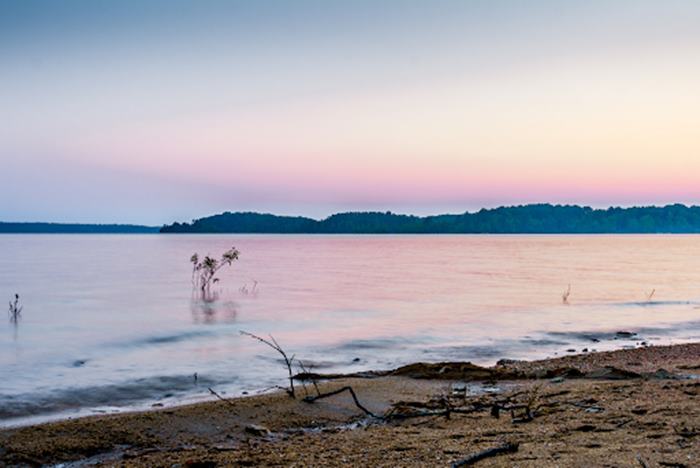
As you plan your trip to Buggs Island Lake, keep an eye on the water level and adjust your angling strategies respectively. The lake’s fluctuating water levels can impact the behavior and location of the fish, so staying informed is key to a successful angling expedition.
When catching bass in Buggs Island Lake, it’s not uncommon to encounter other fish species such as white perch and sunfish. The lake’s diverse fish population adds to the excitement and variety of your angling experience.
To make the most of your Buggs Island Lake bass angling adventure, be sure to explore the various accommodations available. From vessel ramps to picnic areas, the features around the lake ensure convenience and comfort during your angling trip.
Get ready to immerse yourself in the beauty of nature and reel in some unforgettable memories.
Understanding Kerr Lake in North Carolina and Virginia
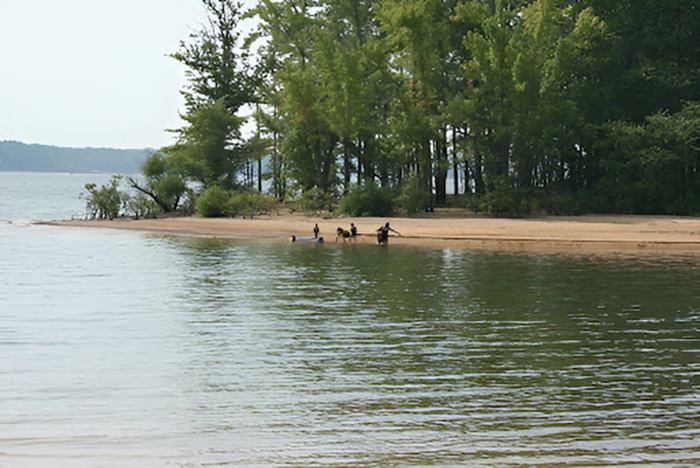
Description
Buggs Island Lake, located on the boundary of North Carolina and Virginia, is a reservoir formed by the John H. Kerr Dam on the Roanoke River. With a surface area of approximately 50,000 acres, it provides ample space for angling and boating activities. The lake is also known for its scenic beauty, with its pristine base surrounded by lush greenery.
History
The history of Buggs Island Lake dates back to the mid-20th century when the John H. Kerr Dam was constructed for flood control and hydroelectric power generation purposes. Over the years, it has evolved into the best angling destination, attracting fishermen from far and wide.
Location, Size and Depth
Situated in the Piedmont region, Buggs Island Lake spans across both North Carolina and Virginia. The lake stretches approximately 39 miles along the Roanoke River, offering ample lakeshore for fishermen to explore. With a maximum depth of around 100 feet in certain areas, Buggs Island Lake provides diverse habitats for various fish species.
Amenities and Features
Buggs Island Lake boasts a range of accommodations and features to enhance the angling experience. The lake is dotted with marinas and campgrounds, providing convenient access to the basin and comfortable accommodations for fishermen and their families. Additionally, there are picnic areas, hiking trails, and recreational areas for visitors to enjoy when taking a break from angling.
In terms of fish species, Buggs Island Lake is home to a variety of game fish, including largemouth bass, striped bass, crappie, catfish, walleye, white perch, and sunfish. Fishermen can try different techniques, such as angling with live critters or lures, to target their desired catch.
Angler Strategies for Kerr Lake Bass Fishing
Types of Bass in Buggs Island Lake
Buggs Island Lake boasts a healthy bass stock, making it a haven for bass angling enthusiasts. Largemouth bass, known for their size and fighting spirit, are abundant in the lake. Fishermen can also find smallmouth bass, which are known for their agility and aggressive nature. Additionally, white bass can be caught by fishermen seeking an exciting bass angling experience.
Tips and Techniques for Successful Bass Angling in Buggs Island Lake
To increase your chances of success on Buggs Island Lake, it’s essential to employ effective angler strategies. Here are some tips and techniques to enhance your bass angling experience:
- Locate the Bites: Understanding the behavior and habits of bass in Buggs Island Lake is crucial. Bass tend to gather around structures such as submerged rocks, fallen trees, and underwater vegetation. Landing your attractant near these structures increases the likelihood of a successful bite.
- Choose the Right Attractant: Bass in Buggs Island Lake respond well to a variety of attractants, including plastic worms, crankbaits, spinnerbaits, and topwater lures. Experimenting with different attractants and observing the bass’s response can help determine which attractant is most effective on a given day.
- Adjust to the Season: Bass behavior changes with the seasons, so it’s important to adapt your techniques respectively. In the spring, when bass are spawning, consider using soft plastic attractants that mimic the appearance of prey. During the summer, when bass seeks cooler areas, try angling in deeper areas of the lake.
Preferred Attractants and Lures for Bass
When catching bass in Buggs Island Lake, certain attractants and lures have proven to be effective. Here are some preferred options among fishermen:
- Plastic worms: Rigged Texas-style or Carolina-style, plastic worms are versatile and can be used to imitate various prey.
- Crankbaits: These lures mimic the movement of injured fish, making them irresistible to bass.
- Spinnerbaits: Spinnerbaits create vibrations and flash, attracting bass in murky areas.
- Topwater lures: These lures create a surface disturbance, enticing bass to strike.
Best Seasons and Time of Day for Bass Fishing in Buggs Island Lake
While bass can be caught year-round in Buggs Island Lake, certain seasons and times of day yield better results. Here are the best seasons and time frames for bass angling:
- Spring: As the temperature rises, bass become more active and begin their spawning rituals. This is an ideal time to catch bass in shallow areas near the shoreline.
- Summer: During the early morning and late evening, when the weather is cooler, bass tend to be more active. angling during these times can lead to successful catches.
- Fall: Bass feed heavily in preparation for winter, making fall an excellent time to fish. Catching bass near submerged structures can yield great results.
- Winter: While bass activity slows down in winter, they can still be caught. Focus on angling in deeper areas where bass seeks warmer areas.
Hotspots for Bass Fishing in Kerr Lake
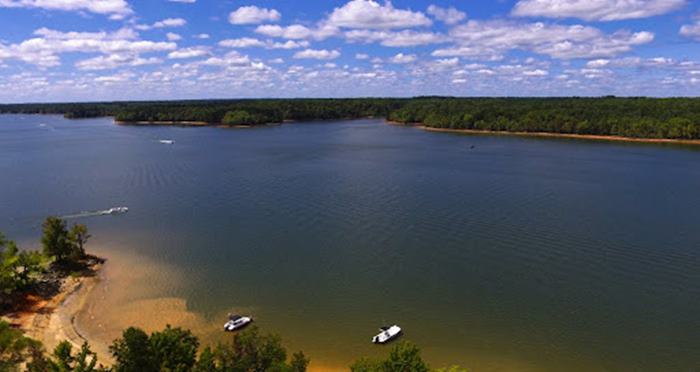
Satterwhite Point
Located on the northwestern shore of Buggs Island Lake, Satterwhite Point is the best hotspot for bass angling. Fishermen flock to this area due to its abundance of submerged structures and the presence of bass throughout the year. Whether you prefer angling along the lakeshore or exploring the deeper offshore areas, Satterwhite Point offers ample opportunities to catch bass.
County Line
Situated on the boundary of North Carolina and Virginia, County Line is another fantastic area for bass angling on Buggs Island Lake. This stretch of the lake is known for its diverse habitat, including channels, coves, and points. Fishermen can navigate the areas and locate bass in both shallow and deeper offshore areas. County Line is a popular spot for fishermen seeking a variety of fish species, including largemouth bass.
Read more: Smith Lake Fishing Guide: Spots, Licenses, Tips – Alabama
Kimball Point
For fishermen looking to catch bass in deeper offshore areas, Kimball Point is a go-to location. This area offers excellent opportunities for trolling and casting, allowing fishermen to cover a larger area and increase their chances of success. Kimball Point is known for its bass stock and attracts both local fishermen and avid bass angling enthusiasts.
The Surroundings of Roanoke
It is surrounded by various enticing angling spots on Buggs Island Lake. Fishermen can explore the lakeshore, locate submerged structures, and catch bass in both shallow and deeper areas. The diverse habitat and abundant bass stock make the surroundings of Roanoke an ideal destination for bass angling.
When it comes to bass fishing on Buggs Island Lake, local knowledge is invaluable. Hiring a fishing guide who is familiar with these hotspots and the behavior of bass in the lake can significantly enhance your fishing experience. They can provide insider tips, and techniques, and help you navigate the lake with ease.
Catfish Fishing
Best Baits and Techniques
When it comes to catfish angling at Buggs Island Lake, it’s important to use the right attractants and techniques to attract these elusive fish. Here are some tried and tested methods to improve your chances of landing a big catfish:
- Cut Bait: Catfish are known to be attracted to smelly attractants, and cut attractant is no exception. Use fresh-cut attractants such as shad, herring, or skipjack to lure in the catfish.
- Chicken Liver: Another popular attractant for catfish is chicken liver. It has a strong scent that can entice even the most cautious catfish.
- Stinkbaits: Stinkbaits are commercially available attractants specifically designed to attract catfish. These attractants usually have a strong odor that catfish find irresistible.
- Bottom angling: Catfish are bottom feeders, so make sure to fish close to the bottom. Use a sinker to keep your attractant down and wait for the catfish to take the attractant.
Top Spots
Buggs Island Lake offers numerous spots for catfish angling. Here are some of the top locations to try your luck:
- Nutbush Bridge: Located on the Virginia side of Buggs Island Lake, Nutbush Bridge is known for its abundant catfish stock. It’s an excellent spot for both bank angling and boat angling.
- Hibernia: Situated on the North Carolina side of the lake, Hibernia is a popular area for catfish angling. The coves and deep channels in this area attract catfish year-round.
- Grassy Creek: Grassy Creek is known for its large catfish and is a favorite spot among local fishermen. The submerged structures and deep holes make it an ideal location for catching trophy catfish.
Catfish Angling Tips and Tricks
To improve your catfish angling experience at Buggs Island Lake, here are some valuable tips and tricks:
- Fish at Night: Catfish are more active during the night, so consider angling during evening hours or early morning for better results.
- Use Circle Hooks: Circle hooks are ideal for catfish angling as they tend to hook the fish in the corner of the mouth, reducing the chances of deep hooking.
- Patience is Key: Catfish can be elusive and require patience. Leave your attractant in the water for an extended period to increase your chances of attracting a catfish.
- Pay Attention to Weather: Catfish tend to be more active during certain weather conditions. Keep an eye on the weather forecast and plan your angling trips respectively.
Catching Trophy Catfish
Buggs Island Lake is known for its trophy catfish. Follow these tips to increase your chances of catching a big catfish:
- Target Deep Holes: Look for deep holes or drop-offs where large catfish are likely to hide during the day.
- Use Large Attractants: When catching trophy catfish, use larger attractants such as whole shad or big chunks of cut bait to attract the attention of these larger fish.
- Fish Near Structure: Catfish often seek shelter near submerged structures such as fallen trees or rock formations. These areas can be the best spots for trophy catfish.
Striper Fishing
Hotspots
Buggs Island Lake offers several hotspots for striper angling. One popular area is near the dam, where the deeper areas provide an ideal habitat for striped bass. Another productive spot is the mouth of Nutbush Creek, where the current creates a feeding zone for stripers. Additionally, fishermen have had success near Goat Island and Hibernia Point.
Effective Lures and Techniques
When it comes to lures and techniques for striper angling at Buggs Island Lake, there are a few proven methods that consistently yield results. Trolling with umbrella rigs or large swimbaits is a popular choice, as it allows you to cover a wide area and mimic a school of baitfish. Another effective technique is live critters angling with shad or herring, using a Carolina rig or free-lining the attractant. Pitching topwater lures during low light conditions can also entice aggressive strikes from stripers.
Strategies for Landing Big Striped Bass
To increase your chances of landing big striped bass at Buggs Island Lake, it’s important to consider a few key strategies. First, catch areas with structure, such as submerged timber or rocky points, as these provide hiding spots for larger stripers. Secondly, pay attention to water temperature and seasonal patterns. In cooler months, stripers tend to move to deeper areas, while in warmer months, they may be more active near the surface. Lastly, vary your retrieval speed and presentation to find what triggers a response from the fish.
Seasonal Patterns for Striper Angling
Understanding the seasonal patterns of striper angling on Buggs Island Lake can greatly enhance your success. In the spring, as temperatures rise, stripers move into shallower areas to spawn. This is a prime time for fishermen to catch them near creek mouths and rocky lakeshore. During the summer, stripers often retreat to deeper, cooler areas, making trolling or live critters angling more effective. In the fall, as temperatures cool again, stripers become more active and can be found feeding near the surface.
Crappie Fishing
Where to Find Them
When it comes to crappie angling at Buggs Island Lake, knowing where to find these elusive fish is key. Crappies can be found in various parts of the lake, but some spots are more productive than others. One popular area is around the submerged timber and brushwood near the lakeshore. These structures provide excellent cover for crappies, attracting them in good numbers. Additionally, the mouths of creeks and coves are also known hotspots for crappie angling.
Best Baits and Rigs
To increase your chances of success, it’s important to use the right attractants and rigs when catching crappies at Buggs Island Lake. Some of the best attractants for crappie angling include minnows, small jigs, and soft plastic attractants. These attractants can be presented on various rigs, such as a simple hook and bobber setup or a drop-shot rig. Experimenting with different colors and sizes will help you determine what the crappies are biting on that particular day.
Tips for Catching Jumbo Crappies
If you’re aiming to catch jumbo-sized crappies at Buggs Island Lake, here are some tips to keep in mind. First, consider angling during low-light periods such as early morning or late evening, as crappies tend to be more active during these times. Second, focus your efforts around submerged structures and drop-offs, as these areas often hold larger crappies. Lastly, try varying your retrieval speed and depth to find the sweet spot that triggers a bite from these trophy fish.
angling Techniques and Approaches
When it comes to crappie angling techniques and approaches at Buggs Island Lake, a few strategies have proven to be effective. One popular technique is vertical jigging, where fishermen drop their jigs or minnows straight down into the water column, catching crappies suspended at different depths. Another technique is casting or pitching jigs near submerged structures, allowing them to sink and then slowly retrieving them. Pay attention to the movement and behavior of the fish to adjust your technique respectively.
Other Fish Species
Walleye
Walleye is a popular fish species to catch in Buggs Island Lake. Known for their excellent taste and challenging fight, walleye attracts fishermen of all skill levels. To improve your chances of success when catching walleye in Buggs Island Lake, consider the following tips:
- Seasonality: Walleye angling is most productive during the spring and fall seasons. Keep in mind that walleye tend to be more active during low light conditions, such as early morning or late evening.
- Techniques: Effective techniques for walleye angling in Buggs Island Lake include trolling with crankbaits or live bait rigs, jigging near drop-offs or submerged structures, and angling with soft plastic swimbaits.
- Preferred Habitat: Walleye are commonly found near submerged structures, such as points, humps, and underwater rock formations. Focus your efforts on these areas to increase your chances of landing a walleye.
White Perch
White perch is another sought-after fish species in Buggs Island Lake. These fish are known for their aggressive nature and willingness to bite a variety of baits and lures. When catching white perch in Buggs Island Lake, consider the following strategies:
- Location: White perch can be found throughout the lake, but they tend to school up near submerged structures, such as brushwood, rocky areas, and bridge pilings. Look for areas with visible cover and structure to locate schools of white perch.
- Bait and Lures: White perch are opportunistic feeders and will bite on a range of baits and lures. Popular choices include small jigs tipped with live critters, small spinners, and soft plastic grubs. Experiment with different presentations to find what works best on any given day.
- Fishing Techniques: Effective techniques for white perch include trawling and retrieving small lures, vertical jigging near structure, and using live critters under a bobber. Keep in mind that white perch tend to be most active during periods of low light or cooler areas temperatures.
Read more: Best Bass Fishing Lakes in The US – Best States For Fishing
Bluegill & Sunfish
For fishermen seeking a fun and rewarding angling experience, catching bluegill and sunfish in Buggs Island Lake can provide just that. These panfish are abundant in the lake and offer great opportunities for fishermen of all ages. Consider the following tips when angling for bluegill and sunfish:
- Habitat: Bluegill and sunfish can be found near shallow areas with vegetation, such as coves, docks, and submerged brushwood. Look for areas with structure and cover to locate these fish.
- Bait and Lures: Bluegill and sunfish are known for their willingness to bite a variety of baits and lures. Popular choices include small worms, crickets, and insect imitations. Use light tackle and adjust your bait presentation based on the fish’s behavior.
- Techniques: Effective techniques for bluegill and sunfish include using a bobber and small hook setup, casting small jigs or spinners, and fly angling with small poppers or nymphs. These fish can provide exciting action for fishermen of all skill levels.
Kerr Lake Water Levels

How to Adapt to Changing Water Levels at Buggs Island Lake
Buggs Island Lake water levels can fluctuate due to various factors such as rainfall, dam releases, and seasonal variations. Understanding and adapting to these changes is crucial for a successful angling experience. Here are some tips to help you adapt to changing water levels at Buggs Island Lake:
- Monitor Water Level Updates: Stay informed about the current water levels by checking reliable sources such as the Buggs Island Lake Guide website and the Virginia Department of Wildlife Resources website. This information will give you an idea of the current conditions and help you plan your angling trips.
- Adjust Angling Techniques: Different water levels require different angling techniques. When the water levels are high, fish tend to move closer to the lakeshore and seek shelter in submerged structures such as fallen trees and brushwood. In such conditions, target these areas using lures or bait that mimic natural prey. When the water levels are low, fish may concentrate in deeper areas. Adjust your angling techniques by using lures that can reach deeper depths or try bottom angling with live critters.
- Explore New Areas: Changing water levels can create new angling opportunities. As the water levels rise, previously inaccessible areas may become more easily navigable, allowing you to explore and fish in different spots. Be open to exploring new areas and adapting your angling strategies accordingly.
Strategies for Fishing High Water Conditions on Buggs Island Lake
Angling during high areas conditions can be challenging, but with the right strategies, you can increase your chances of success. Here are some strategies to consider when angling high areas conditions on Buggs Island Lake:
- Focus on Structure: High water levels provide ample cover for fish, so focus your efforts on angling around submerged structures such as submerged trees, brushwood, and rock formations. These areas provide shelter and attract fish seeking refuge from the fast-moving water.
- Use Vibrant Lures: In murky areas conditions, use lures with vibrant colors and strong vibrations to attract fish. Brightly colored crankbaits, spinnerbaits, and topwater lures can be effective in high water conditions.
- Slow Down Your Retrieval: Fish tend to be less active in high areas conditions, so slow down your retrieval speed. This allows the fish more time to notice and strike your lure.
Tips for Navigating Low Water Levels on Buggs Island Lake
Angling during low water levels requires some adjustments to your approach. Here are some tips to help you navigate low areas conditions on Buggs Island Lake:
- Locate Deeper Areas: During low water levels, fish often concentrate in deeper areas of the lake. Look for channels, drop-offs, and submerged structures that provide deeper areas and serve as hiding spots for fish.
- Downsize Your Lures: In low water conditions, fish can be more skittish and wary. Downsize your lures to match the smaller forage available to the fish. This can increase your chances of getting a bite.
- Pay Attention to Cover: With low water levels, previously submerged covers such as stumps, rocks, and weed beds may become exposed. These areas can still hold fish, so pay close attention to these spots and catch them with your lures.
Understanding Buggs Island Lake water levels and adapting your angling techniques respectively will greatly enhance your chances of success. Remember to check the water level updates, explore different areas, and adjust your strategies based on the current conditions.
Kerr Lake Fishing Regulations and Licensing
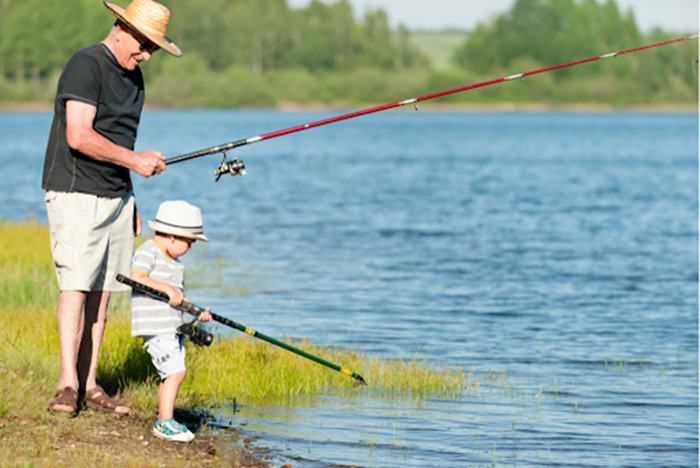
Before you cast your line into the lake, it’s important to familiarize yourself with the angling regulations specific to Buggs Island Lake. By following these regulations, you can help preserve the lake’s ecosystem and ensure a sustainable angling experience.
angling Seasons and Limits
To maintain the fish population and promote responsible angling practices, Buggs Island Lake has specific angling seasons and limits for different species. It’s essential to be aware of these regulations to avoid any penalties or fines. The seasons and limits may vary depending on the type of fish you are catching, so it’s crucial to consult the official angling regulations provided by the North Carolina Wildlife Resources Commission and the Virginia Department of Wildlife Resources.
Catch and Release Practices
Buggs Island Lake encourages catch-and-release practices to protect the fish population and maintain the overall health of the lake. When practicing catch and release, it’s important to handle the fish with care, minimize the time it spends out of the water, and release it back into the lake as quickly as possible. This ensures that future generations can also enjoy the thrill of angling on Buggs Island Lake.
angling Licenses for Kerr Lake
Before you embark on your angling adventure at Buggs Island Lake, it’s necessary to obtain the required angling licenses. Since Buggs Island Lake spans both North Carolina and Virginia, you will need to be aware of the licensing requirements for both states.
North Carolina Angling License
If you plan to fish on the North Carolina side of Buggs Island Lake, you will need a valid North Carolina angling license. The North Carolina Wildlife Resources Commission offers various angling license options, including short-term, annual, and lifetime licenses. You can purchase a North Carolina angling license online through the official website of the North Carolina Wildlife Resources Commission or from authorized license agents.
Virginia angling License
For angling on the Virginia side of Buggs Island Lake, you will need a valid Virginia angling license. The Virginia Department of Wildlife Resources provides different types of angling licenses, including freshwater angling licenses and combination licenses. Similar to North Carolina, you can purchase a Virginia fishing license online through the official website of the Virginia Department of Wildlife Resources or from authorized license agents.
Marinas and Campgrounds
Boat Ramps and Dock Features
One of the key features of Buggs Island Lake is its well-maintained vessel ramps and dock buildings. These provide easy access to the lake, allowing boaters to launch their vessels and set off on their angling adventures. Whether you’re in a small angling boat or a larger vessel, there are boat ramps and docks available to accommodate your needs.
Picnic Areas and Amenities
In addition to excellent boating and angling opportunities, Buggs Island Lake offers scenic picnic areas where visitors can relax and enjoy a meal. Many of these areas are equipped with picnic tables, grills and restroom buildings, providing a comfortable environment for families and friends to gather.
Top Campgrounds for Anglers
For those who wish to extend their angling trip or simply enjoy a peaceful getaway, Buggs Island Lake offers a range of top-notch campgrounds. These campgrounds provide convenient access to the lake, allowing fishermen to fish from the shoreline or launch their boats for a day on the water.
Camping Facilities and Accommodations
The campgrounds near Buggs Island Lake offer a variety of camping options, including tent sites, RV sites, and cabins. Many of these features provide accommodations such as electrical hookups, showers, and laundry facilities to ensure a comfortable stay. Some campgrounds even offer accommodations specifically tailored to fishermen, such as fish cleaning stations and bait shops.
Camping Tips and Recommendations for Buggs Island Lake Visitors
If you’re planning a camping trip to Buggs Island Lake, here are some tips and recommendations to enhance your experience:
- Reserve Your Campsite: Buggs Island Lake campgrounds can be popular, especially during peak angling seasons. It’s advisable to make a reservation in advance to secure your preferred campsite.
- Pack Essential Gear: Don’t forget to pack essential camping gear, such as a tent, sleeping bags, cooking equipment, and insect repellent. Additionally, make sure to bring your angling gear, including rods, reels, and tackle boxes.
- Follow angling Regulations: Familiarize yourself with the angling regulations and licensing requirements for Buggs Island Lake. This ensures that you’re angling within the legal limits and helps preserve the lake’s fish population for future fishermen.
- Explore the Surrounding Area: Buggs Island Lake is surrounded by beautiful natural landscapes and offers opportunities for hiking, birdwatching, and wildlife spotting. Take some time to explore the area and immerse yourself in the serene beauty of the lake.
Planning Your Trip
Directions to Kerr Reservoir
Here are the directions to help you find your way:
- From the north, take I-85 South and exit onto US-58 East. Follow the signs for Kerr Lake/Buggs Island.
- From the south, take I-85 North and exit onto US-1 North. Continue on US-1 North until you reach Kerr Lake/Buggs Island.
Suggestions for Planning a Successful Angling Trip to Lake
When planning your angling trip to Buggs Island Lake, consider the following tips to make it a memorable and successful experience:
Bank & Boat Access – Virginia
Buggs Island Lake in Virginia offers various options for bank and boat access. Here are some recommended spots:
- Longwood Park: This park provides both bank angling and boat access. Enjoy angling from the shoreline or launch your boat for a day on the water.
- Clarksville Marina: Located near Clarksville, this marina offers boat rentals and a convenient launch point to explore Buggs Island Lake.
Bank & Boat Access – North Carolina
If you prefer angling from the North Carolina side of Buggs Island Lake, here are some excellent bank and boat access points:
- Nutbush Bridge Wildlife Ramp: This ramp provides easy access to the lake for boaters and fishermen alike. It’s a popular spot for angling bass and catfish.
- County Line Wildlife Ramp: Located near the Virginia-North Carolina boundary, this ramp offers easy access to the lake and is known for its abundant white perch and sunfish.
Recommendations for Accommodations, Boat Rentals and Local Amenities
To enhance your angling trip experience, consider the following recommendations for accommodations, boat rentals, and local accommodations:
- Lakefront Cabins: Rent a cozy cabin near Buggs Island Lake for a comfortable stay with beautiful waterfront views.
- Boat Rentals: If you don’t have your own boat, consider renting one from a local marina. This allows you to explore the lake and access prime angling spots.
- Nearby Restaurants: After a long day of angling, treat yourself to a delicious meal at one of the many restaurants located near Buggs Island Lake.
Remember to check local regulations and angling guidelines before your trip. Enjoy your angling adventure at Kerr Lake!
Disclaimer: The information provided in this article is based on reliable sources and research. It is always recommended to refer to official angling regulations and local authorities for the most up-to-date information
FAQs
Q: What is the state where Kerr Lake is located?
A: Kerr Lake is located on the boundary of North Carolina and Virginia.
Q: Are there any other lakes near Kerr Lake that offer excellent angling opportunities?
A: Yes, Lake Gaston is another popular lake in the area known for its angling potential.
Q: Is Buggs Island Lake a good destination for angling tournaments?
A: Buggs Island Lake is often chosen as a venue for angling tournaments due to its diverse fishery and abundance of angling hotspots.
Q: Is there a map available to help anglers navigate Buggs Island Lake?
A: Yes, there are maps available that provide information on the lake’s layout and key angling areas.
Q: What are some of the notable fish species found in Buggs Island Lake?
A: fishermen can expect to catch a wide range of fish species in Buggs Island Lake, including blue catfish, flathead catfish, channel catfish, and bass.
Q: Are there any boat launch facilities at Kerr Lake?
A: Yes, there are vessel ramps and launch facilities available for fishermen to access the lake with their boats.
Q: Is Buggs Island Lake considered a renowned fishery for catching big fish?
A: Yes, Buggs Island Lake is known for its impressive bass population and offers opportunities for fishermen to catch big fish.
Q: Are there any state parks around Buggs Island Lake?
A: Yes, there are state parks in the vicinity of Buggs Island Lake, such as the Buckhorn State Park in North Carolina.
Q: Can fishermen expect good fishing regardless of the water level at Buggs Island Lake?
A: Yes, Buggs Island Lake provides good angling opportunities regardless of the water level.

